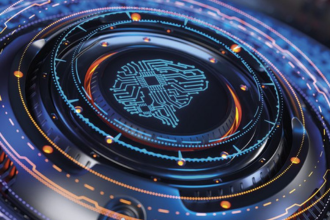- Inicio
- Blog
- Marketing Automation
- Generative AI: The fascinating world of autonomous creation
Generative AI: The fascinating world of autonomous creation
Introduction
In recent years, artificial intelligence (AI) has advanced by leaps and bounds, revolutionizing different areas of our lives. One of the most exciting branches of AI is called Generative AI, which has the ability to create content autonomously, from images and music to text and video. In this article, we will explore the main aspects of Generative AI and discover how this technology is shaping the future of creativity.
What is Generative IA?
Generative AI is a branch of artificial intelligence that focuses on the creation of original content through the use of algorithms and machine learning models. Unlike traditional AI, which focuses on solving specific problems, Generative AI seeks to generate new ideas and produce content that does not previously exist. It uses techniques such as deep learning and neural networks to learn patterns from large data sets and then generate new creative pieces.
Generative Adversarial Networks (GAN)
One of the most prominent techniques in the field of Generative AI is the use of Generative Adversarial Networks (GANs). These networks consist of two main components: the generator and the discriminator. The generator creates new content and the discriminator evaluates the quality of the generated creations. Both components are trained simultaneously in a process of mutual competition, constantly improving the ability to generate more realistic and convincing content.
Generative IA applications
Generative AI has a wide range of applications in different industries. Here are some outstanding examples:
a) Art and Design: Artists and designers are using Generative AI to create innovative artwork and generate new ideas. From paintings and sculptures to graphic and fashion designs, AI has become a valuable creative tool.
b) Music: Generative AI has proven to be able to compose original music in different styles and genres. The algorithms learn from vast collections of songs and are able to generate unique melodies and harmonies.
c) Text Generation: Automatic text generation is another field where Generative AI is having a significant impact. From writing news and articles to creating stories and scripts, AI is capable of producing coherent and compelling textual content.
Ethical challenges and considerations
As Generative AI becomes more advanced, ethical and moral challenges arise. Some of the important considerations include the intellectual property of generated creations, the potential propagation of falsely generated content, and the influence on the perception of reality. Addressing these challenges is essential to ensure responsible and ethical use of Generative AI.
Conclusion
Generative AI is revolutionizing the world of creativity, enabling machines to generate original and autonomous content in a variety of ways. From music and art to text generation, this technology promises to unleash a new wave of innovation and artistic expression. However, it is crucial to address the ethical challenges associated with Generative AI to ensure that its implementation is responsible and beneficial to society. In the near future, we can expect to see even more exciting developments in this field and enjoy the generative creations that emerge from human-machine collaboration.



